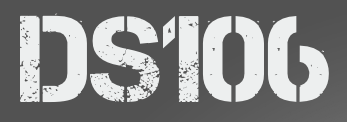H817 – Block 2 – Activity 14 – Comparing MOOCs
For activity 14 I have chosen to compare the technological, pedagogical and general philosophical approach of the Digital Storytelling (DS106) course to “How To Teach Online: Providing Continuity for Students” (HTTO) provided by FutureLearn (2020).
Technology
DS106: The Digital Storytelling course DS106 provided by UMW (2020). This is a for-credit course running alongside a MOOC allowing open participation in the course. The MOOC website is constructed as a ‘hub’ type of website. There is a lot of information on the home page. It is not immediately obvious what you are supposed to do if you wish to participate. There are three strands of the course running at the time of writing. Two strands have tutors attached whilst another is referred to as “Open DS106 (Ongoing Open Course)”.

Student inputs to the course are mainly from syndicated blog postings (some 85,000 at time of writing) using various hashtags. By taking this approach the site will be spared the requirement to store vast amounts of student work such as traditional VLE installations typically consume.
A novel innovation for the DS106 course is the provision of a radio station. Any participants of the course are encouraged to produce content for the radio station.
HTTO: This course has been provided in response to the current pandemic to support educators in the transition from face to face to online learning. In contrast to DS106 the HTTO course form FutureLearn is hosted entirely inside the learning platform on FutureLearn.

All of the interventions and topic are supplied in a linear, consistent style. This is not the case for DS106 where, although the assessment bank has a consistent look and feel, the assessments themselves vary widely in their presentation style.
Pedagogy
DS106: There is a randomness to the DS106 course which can be confusing. The getting started page has instructions for participants of the various strands including creating social media accounts and acquiring software. Cormier’s (2010) five steps to participating in a MOOC may be a useful reference for anyone planning to attempt the course.
The pedagogy is similar to Social Constructivism where the student’s interaction with others are the basis of their learning.

The course materials are not presented in a traditional VLE layout (Topic or week-based activities). Instead the student is encouraged to approach the course in their own way. As noted by Stacey (2013), students from all strands of the course are encouraged to create assignments for others. These assignments are then placed in an assessment bank and made available to all future participants. [Stacey] goes on to state that this “is a hugely significant pedagogical innovation”.
HTTO: In contrast to DS106 this course uses a more didactic approach. All of the source materials teachers might be required to access to complete the assignments are provided. The course is laid out over weeks with learners marking each stage of the course ‘completed’ by themselves.
There is some social aspect to the course as many interventions have a discussion forum attached to them. It would be useful if there were a way to consolidate the vast numbers of posts in these forums. No search facility is provided to sort the (sometimes dozens) of pages of comments attached to some activities. As suggested by Weller (2012) “if the M is massive it’s not possible to deal with everyone”.
There are weekly Q&A sessions with the course creators where the ‘top liked’ comments are addressed.
Further to the forum entries participants are encouraged to post on social media sharing practice using the hashtag #FLteachonline.
General approach and philosophy
DS106: The philosophy of DS106 appears to be one of participation, openness and flexibility. Learners are free to complete (or not) any part of the course. Assessment bank materials are free to share with only attribution being requested if doing so. Each cohort of students should potentially add value to the course with their contributions.
HTTO: This course is provided in a linear format with set goals each week. As this course has a particular aim it is perhaps necessary to have a strict structure. The target participant is one who is perhaps less confident about the transition from face to face to online delivery.
Although the HTTO course is free to participate in, the contents of the course are “free” as in “free to participate”. The course content cannot be remixed or re-purposed. Every intervention has “© FutureLearn” attached. This is comparison to DS106 not a criticism. Course creators are, of course, free to assign any rights they wish to their own content.
References:
Cormier, D (2010) Success in a MOOC, Available at: https://www.youtube.com/watch?v=r8avYQ5ZqM0 (Accessed: 7th April 2020).
Stacey, P. (2013) ‘The pedagogy of MOOCs’, Musings on the edtech frontier, 11 May [Online]. Available at http://edtechfrontier.com/ 2013/ 05/ 11/ the-pedagogy-of-moocs/. (Accessed 7th April 2020)
UMW (2020) DS106, Available at: http://ds106.us/ (Accessed: 7th April 2020).
Weller, M (2012) MOOCs, Available at: https://www.youtube.com/watch?v=l1G4SUblnbo&feature=emb_logo (Accessed: 6th April 2020).